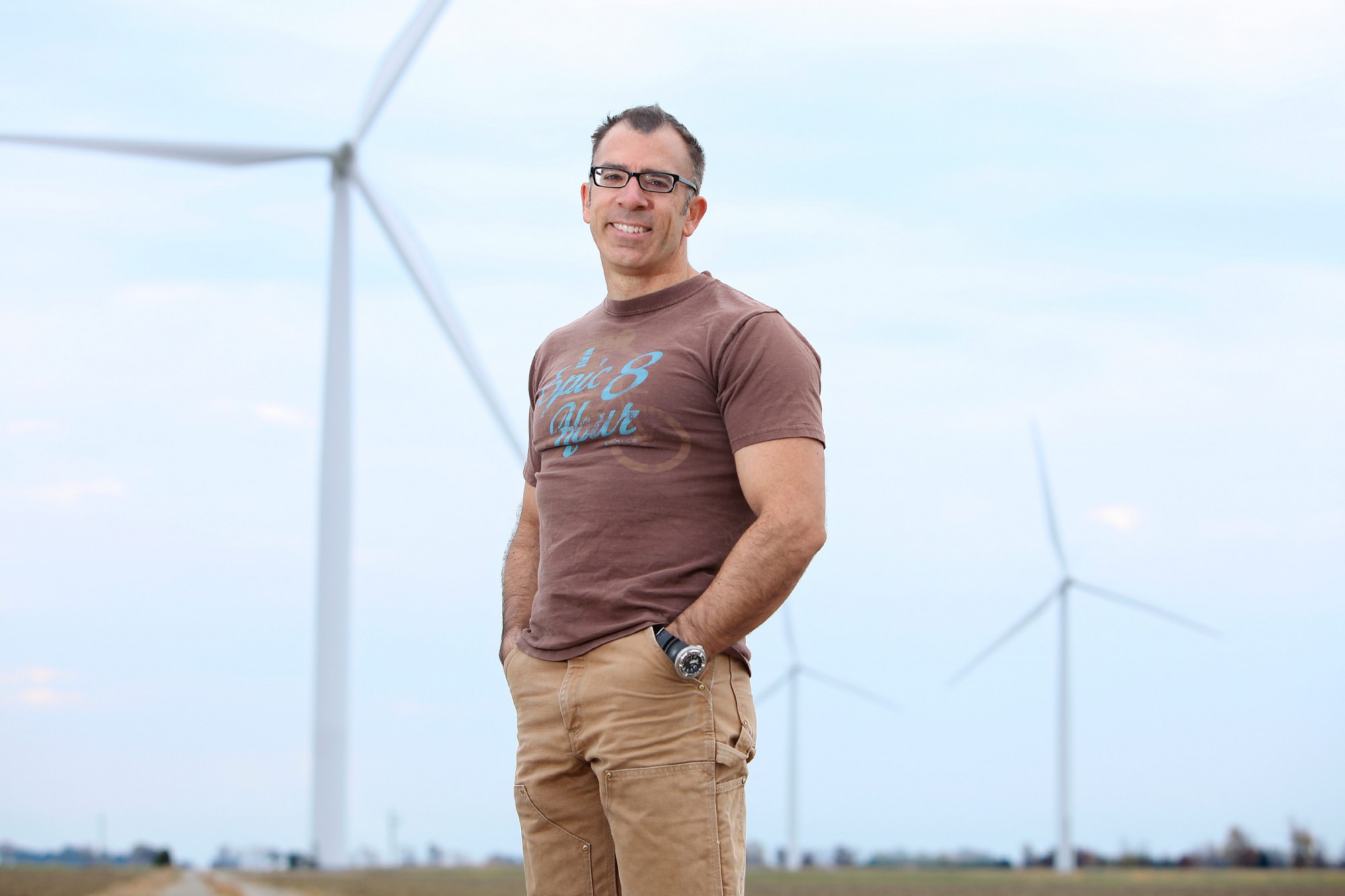
In the last five years, the Canadian wind industry has seen exponential growth. More than 6,000 grid-connected turbines pepper the Canadian landscape, but what happens once these towering machines reach end of life?
A University of Windsor researcher has teamed with industry and academia to find out.
“It’s coming and there’s been little planning” said Dr. Rupp Carriveau, a UWindsor associate engineering professor and director of the UWindsor Turbulence and Energy Lab. “They haven’t been building megawatt class machines that long.”
Carriveau has partnered with Kruger Energy, the Wind Energy Institute of Canada (WEICan) and Enbridge to create an investment decision support system for commercial wind energy. Each partnering outlet has committed $42,000 to the project over the next two years in addition to $180,000 in national funding from the Natural Sciences and Engineering Research Council of Canada (NSERC) and $120,000 from the Ontario Centres of Excellence.
The project is called YEAR21, referencing the year following the machine’s 20-year life expectancy. Carriveau will collaborate with Western University’s Matt Davison, a Canada Research Chair in Quantitative finance to conduct economic forecasting, as well as engineering reliability specialists also from Western, Han Ping Hong and Tim Newson.
Carriveau compares owning a turbine to owning an ageing car. Should you buy brand new tires if the car may not last as long as the tires? Should you try to make the vehicle last another five years with repairs and upgrades or should you just drive it into the ground?
“There is a ton of data; you just don’t know which measures to pay attention to,” Carriveau said, listing wind speed, wind turbulence, temperatures, ground conditions, humidity, and how the owners have operated the asset, as sample factors. “We need guidance on how long assets are going to last. What happens when you hit 20 years and the asset is still ready to go? Should owners repair, replace, expand, remove, do nothing or go to a private buyer?”
This is particularly challenging as 20 years also marks the end of many guaranteed power purchase agreements. Owners may then have to enter a more uncertain power market. In European countries, some turbines have surpassed year 20. Dedicated on-site machine shops have even kept Palm Springs, California machines functioning for more than 30 years.
“But the conditions and the machines are so different,” Carriveau said. “Wind energy as a power generation asset is relatively new in that it hasn’t been around for 50 or 100 years like gas or coal. There are so few end of life scenarios.”
A wind turbine carries a hefty $2 to $4 million build and install price tag. Most of the wind turbines lining the Ontario Highway 401 are under 12-years-old. With approximately $550 million invested in turbines, Kruger Energy has granted Carriveau access to eight years’ worth of data from its Chatham-Kent wind farms. The two farms house 88 wind turbines that generate enough electricity to power approximately 60,000 households in Ontario. The wind farms are managed by Kruger and the energy is sold to Ontario’s Independent Electricity System Operator under 20-year supply contracts.
“We are hoping that proactive mapping a variety of these scenarios will help owners of North American wind farms maximize the value of their investments,” Carriveau said.
